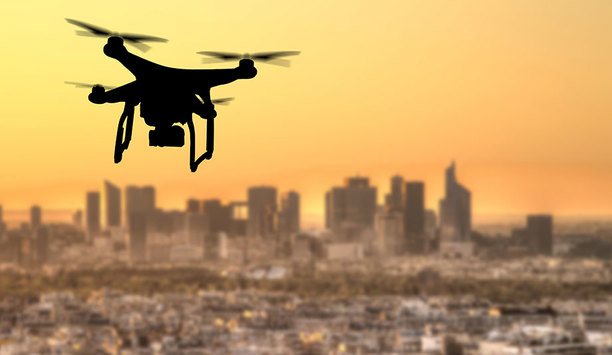
With the increasing use of drones in the country where the projected value of the industry and market is placed at around US$885.7 million, there is an imperative need to focus on Counter-Umanned Aircraft Systems (C-UAS) whose solution market is expected to touch US$1.2 billion by 2025.
In a study by Ernest and Young (EY) India and trade body (FICCI), it was emphasized that the potential advantages of drone use cases and applications far outweigh the approach to outright ban the import, manufacture or usage of drones.
The C-UAS technologies have been used across multiple countries to prevent the risk of disruption or destruction caused by drones. Given the applications of C-UAS technologies, experts forecast that this market is expected to initially spurt and then the drone market is expected to grow.
The C-UAS markets help detect, identify and neutralize different types of risks from drone usage. Broadly, drone usage could pose a threat to privacy, security or a penetration risk and an effective C-UAS technology would need to timely identify and address these risks.
With smugglers now using drones to transport contraband across borders dropping prohibited items in sensitive areas like prisons and other restricted places, these have the capacity to enable security risks as they circumvent the traditional security processes.
Drones can be used to create covert channels of communication using peripherals like multifunction printers and LEDs in hard drives revealing that drones along with the requisite payloads can be used for increasing penetration risks to cause data leakage.
Considering the drone platform and the number of different payloads which can be used on the platform, C-UAS technologies have seen extensive investment and development. The competition between “hackers” who leverage technology to expose different types of risks, with or without malicious intent, which require preparation are mostly at the global level, but the possibility of similar usage in India cannot be ruled out and so C-UAS technologies have greater importance.
The Directorate General of Civil Aviation (DGCA) released the Civil Aviation Regulations (CAR) in August 2018 to be implemented effective December 2018 marking a significant milestone in drone adoption in India, since it sought to regulate and legitimize drone ownership and operations, both of which were not strictly legal at the time.
According to the CAR, UAVs are categorized into nano, micro, small, medium and large based on their weight classification. Thus, increasingly higher safety related requirements are prescribed in the policy document for each subsequently higher category of UAVs. Even operational accountability goes up progressively as per categorization.
The Civil Aviation Regulation provided for an online registry platform (Digital Sky) for drone ownership and operations, which is key to laying a strong foundation for an effective regulation. The Indian government intends to bring the policy level requirements to execution, with the Digital Sky Platform. This platform will enable all the UAVs, their owners and their operating entities – companies as well as individuals – to register with DGCA.
As per the regulation, all UAVs either imported, assembled or manufactured in India will need to get a Unique Identification Number (UIN), provided they meet specific hardware and software requirements based on their weight class. The policy also requires that the airspace be segregated into zone classifications at a state level, thus ensuring that the operating risks are mapped to not just aircraft type but also airspace within which such operations are proposed. Further, a minimum set of manufacturing guidelines have been introduced to bring elements of safety, security and privacy protection.
India is unique in its regulatory implementation, by means of its No Permission No Take-off (NPNT) policy for UAV operations. Under the process, each proposed UAV flight needs to have a permission token loaded on the UAV autopilot, to enable its take-off. The NPNT framework is proposed to be integrating UAV operating compliance requirements at the autopilot hardware and software levels.
The CAR framework for UAS in India provides a robust structure to mitigate the different types of risks from rogue drones. While the implementation mechanism is being put in place, it is also important to understand why the C-UAS technology is important from an Indian perspective. While CAR provides a framework to define the legality, C-UAS provides the array of counter measure options in case the regulation is not being followed.
According to some estimates, close to 50,000 drones were operating in India prior to policy notification (CAR, 2018) in August 2018. Almost all of these drones are not compliant to the NPNT requirements mandated in CAR. Even though the first official notice banning the use of UAVs in Indian airspace was issued by DGCA, way back in October 2014, it was difficult to enforce this ban. Notwithstanding their legalities or otherwise, of manufacture, import or assembly, these drones are currently facing an uncertain future since they would not be compliant to NPNT requirements. Limited ability to monitor flights of this latent population of unregistered drones highlight an immediate risk in operations and the need for C-UAS technologies.








